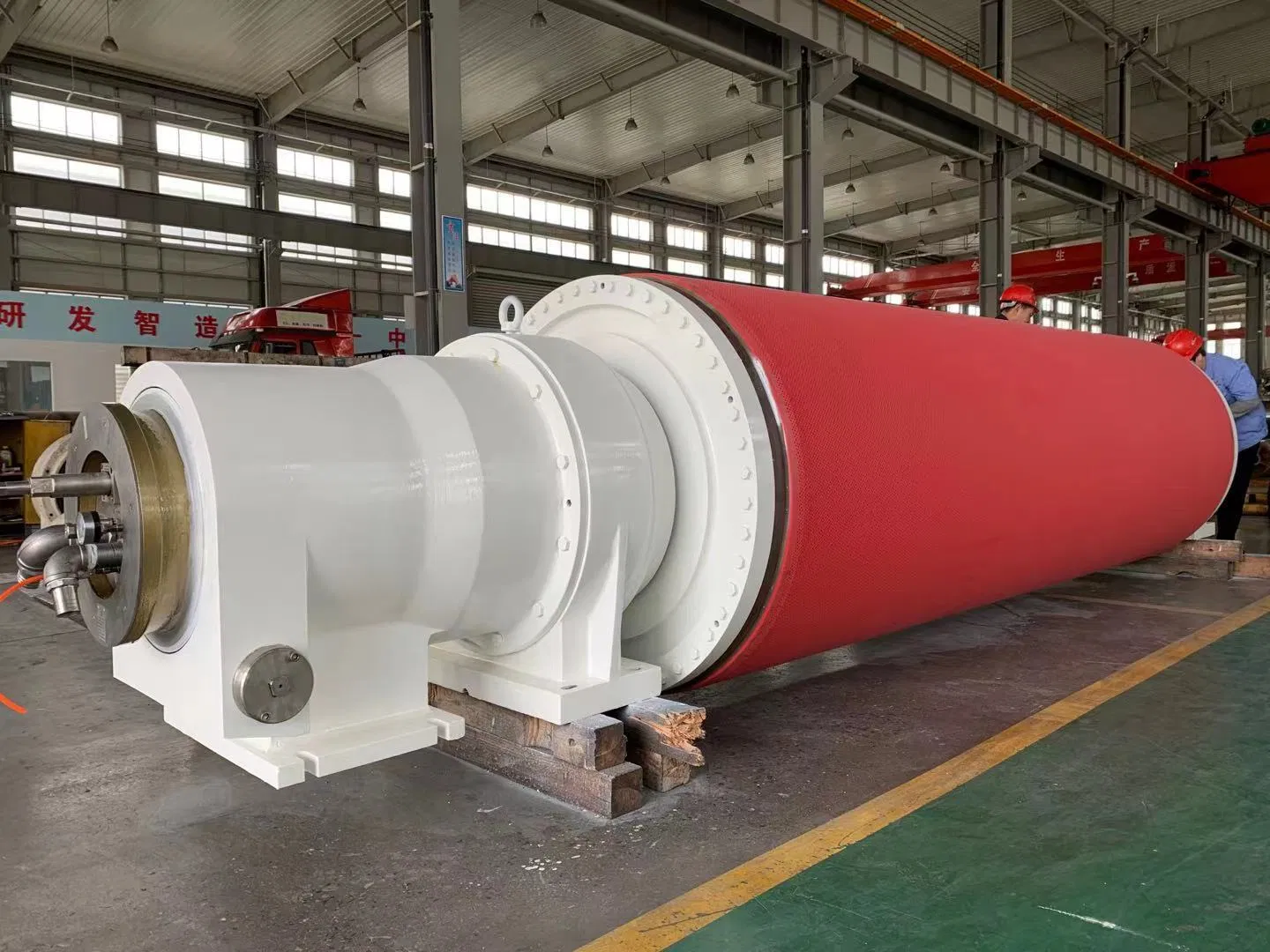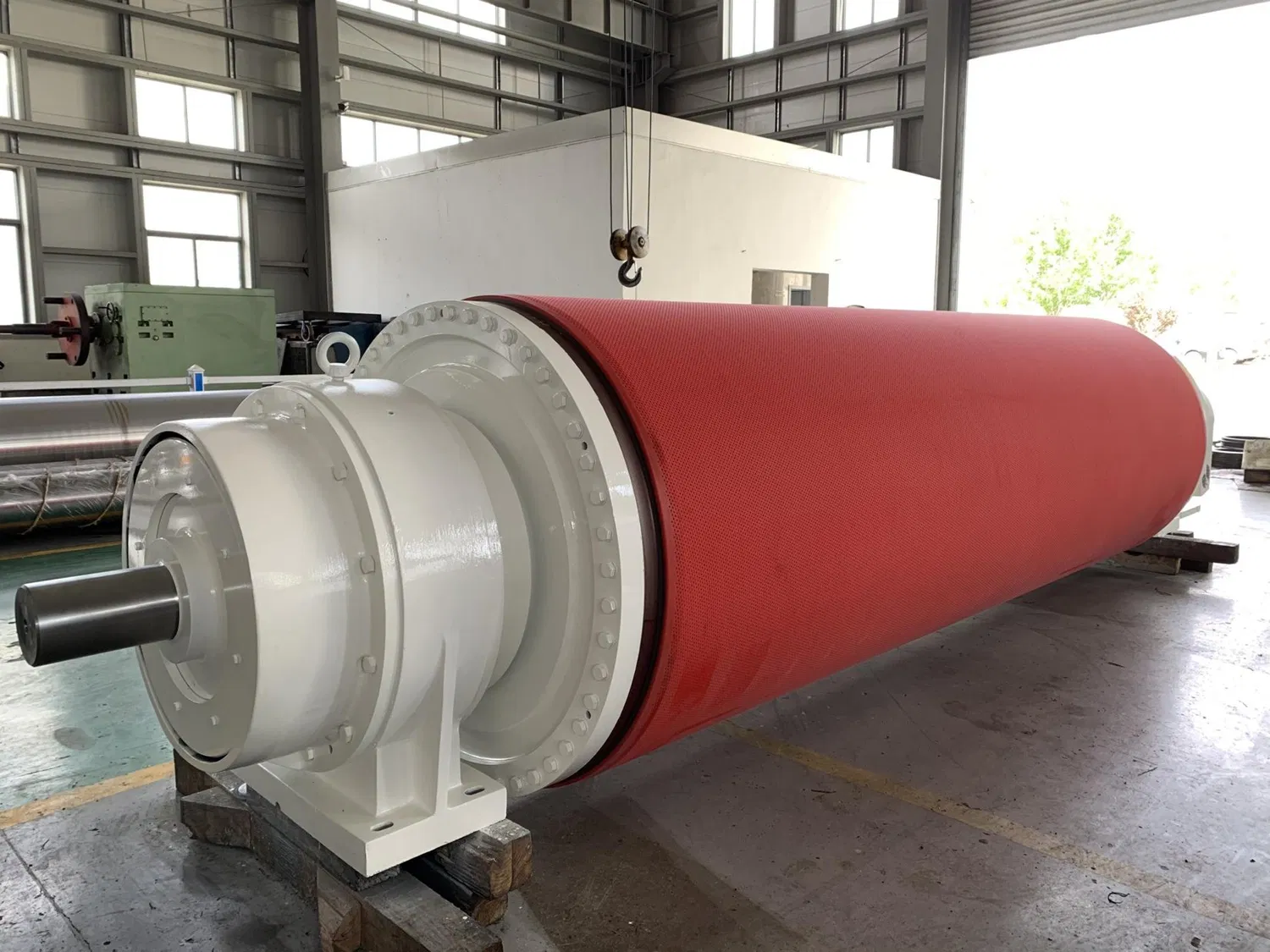When it comes to industrial machinery, few components are as critical yet as often misunderstood as the press roll. These unassuming giants are the workhorses of countless industries, from paper and pulp to textiles, printing, and even metallurgy. They play a pivotal role in dewatering, compacting, smoothing, and shaping materials, directly impacting product quality and operational efficiency. But here’s the million-dollar question that often vexes procurement managers and business owners alike: what truly determines the press roll factory price? It's not just about the raw materials; it's a complex interplay of engineering, manufacturing expertise, market dynamics, and a host of other nuanced factors.
To be honest, many assume that a lower price always equates to a better deal. However, with something as fundamental as a press roll, an initial saving can quickly turn into a significant long-term liability if quality is compromised. Understanding the intricacies behind the pricing allows you to make an informed decision, ensuring you invest in a component that delivers performance, durability, and ultimately, a strong return on investment. Let's peel back the layers and explore what goes into the cost of these essential industrial components.
Understanding Press Rolls: More Than Just a Cylinder
Before we delve into pricing, it's crucial to appreciate what a press roll actually is and why its precision is paramount. At its core, a press roll is a cylindrical component designed to apply pressure to a web or sheet of material. Simple, right? Not quite. Their design and construction are highly specialized, varying dramatically based on their application.
Consider a paper machine, for instance. Its press rolls are massive, often weighing several tons, and must withstand immense pressure, high temperatures, and corrosive environments. They are typically covered with specialized rubber, composite, or ceramic coatings, each chosen for its specific properties—like wear resistance, chemical inertness, or grip. In the textile industry, press rolls might be smaller but require extreme precision for calendering or finishing fabrics, demanding flawless surfaces and uniform pressure distribution. Each application dictates specific material choices, surface finishes, and internal structures, all of which contribute significantly to the overall industrial press roller cost.
Interestingly enough, the performance of a press roll isn't just about its physical attributes; it's also about its dynamic balance, concentricity, and the ability to maintain consistent nip pressure across its entire face. Any deviation can lead to product defects, energy waste, and premature wear, highlighting why a cheap roll can be incredibly expensive in the long run. Many experts agree that investing in a high-quality press roll is a foundational step towards operational excellence.
Key Components and Their Impact on Cost
- Core Material: Typically high-grade steel or cast iron, chosen for strength, rigidity, and resistance to deflection. The quality and sourcing of this raw material are primary cost drivers.
- Covering Material: This is where much of the specialized engineering lies. Rubber (various polymers like EPDM, NBR, SBR), polyurethane, composite materials, and even ceramic or metallic coatings are used. Each type has a different cost, lifespan, and performance characteristic. For example, a specialized ceramic coating for extreme wear resistance will significantly increase the press roll factory price compared to a standard rubber cover.
- Internal Structure: Some rolls are solid, others hollow, and some feature complex internal cooling or heating channels. These designs require intricate machining and fabrication, adding to the manufacturing complexity and cost.
- Bearings and Journals: High-precision bearings are essential for smooth operation and longevity. The quality and type of bearings, along with the machining of the journals, are critical cost factors.
- Balancing and Finishing: Dynamic balancing ensures smooth, vibration-free operation at high speeds, preventing premature wear and product quality issues. Precision grinding and polishing of the surface are also labor-intensive processes that contribute to the final price.

Factors Influencing Press Roll Factory Price: A Deep Dive
The price tag on a press roll isn't pulled out of thin air. It's the culmination of numerous factors, each contributing to the final figure. Understanding these elements empowers buyers to negotiate better, compare offers more effectively, and ultimately, make a smarter purchase.
1. Material Specification and Quality
As touched upon, the choice of core material and especially the covering material is paramount. High-performance polymers, specialized composites, or exotic alloys designed for extreme conditions (e.g., high temperature, aggressive chemicals, abrasive wear) inherently cost more than standard materials. Furthermore, the grade and purity of these materials, and the rigorous testing they undergo, directly influence their price. A manufacturer using certified, premium-grade materials will naturally have a higher press roll factory price than one opting for cheaper, less reliable alternatives.
2. Design Complexity and Customization
Standard press rolls, produced in volume, will generally be more affordable. However, many industrial applications require highly customized rolls with specific dimensions, surface profiles (e.g., grooved, crowned), internal structures, or unique covering formulations. Customization involves extensive engineering, CAD design, specialized tooling, and often, one-off manufacturing processes. This bespoke approach significantly increases the cost. Frankly speaking, if your application demands unique specifications, expect a higher industrial press roller cost due to the specialized labor and resources involved.
3. Manufacturing Process and Technology
The sophistication of the manufacturing facility plays a huge role. Factories equipped with state-of-the-art CNC machining centers, advanced grinding machines, precision balancing equipment, and climate-controlled environments for covering application can produce rolls with tighter tolerances and superior finishes. These technologies represent significant capital investment for the manufacturer, which is reflected in their pricing. A factory that adheres to stringent quality control protocols, including non-destructive testing and comprehensive performance checks, also incurs higher operational costs, but delivers a more reliable product.
4. Volume of Order
Like most manufactured goods, press rolls benefit from economies of scale. Ordering multiple rolls, especially if they share similar specifications, can often lead to a lower per-unit press roll factory price. This is because setup costs, material procurement, and production planning can be optimized for larger batches. For smaller, one-off orders, these fixed costs are spread over fewer units, resulting in a higher individual price.
5. Supplier Reputation and After-Sales Service
A reputable manufacturer with a proven track record often commands a higher price, and for good reason. They typically offer superior product quality, adhere to strict delivery schedules, and provide excellent after-sales support, including installation guidance, maintenance advice, and repair services. The peace of mind that comes with knowing you have a reliable partner for critical components is, in my experience, invaluable. This also extends to warranty periods and the availability of spare parts, which can significantly impact the long-term total cost of ownership.

Navigating the Market: How to Secure the Best Industrial Press Roller Cost
Finding the sweet spot between quality and cost requires a strategic approach. It's not just about getting the lowest quote, but about securing the best value proposition for your specific needs. Have you ever wondered if you're truly getting the best deal, or just the cheapest option?
1. Clearly Define Your Requirements
Before even contacting suppliers, have a crystal-clear understanding of your application's demands. What are the operating temperatures, pressures, speeds, and chemical exposures? What are the precise dimensions and surface finish requirements? Providing detailed specifications upfront minimizes miscommunication, reduces the need for costly redesigns, and ensures you get accurate quotes. This clarity is crucial for securing competitive paper machine press roll pricing or any other specialized roll.
2. Request Multiple Quotes
Obtain quotes from at least three different reputable manufacturers. This allows you to compare not just prices, but also lead times, material specifications, warranty terms, and service offerings. Don't be afraid to ask for a breakdown of costs if a quote seems unusually high or low. Transparency is key.
3. Evaluate Total Cost of Ownership (TCO)
This is perhaps the most important consideration. The TCO includes the initial purchase price, but also shipping, installation, energy consumption, maintenance, repair costs, and crucially, the cost of downtime due to roll failure. A cheaper roll that wears out quickly, causes product defects, or requires frequent maintenance will inevitably cost more in the long run than a higher-priced, durable alternative. Many experts agree that focusing on TCO rather than just the upfront press roll factory price is a hallmark of smart procurement.
4. Consider Long-Term Relationships
Building a strong relationship with a trusted supplier can yield benefits beyond just the current purchase. Preferred customer status, better payment terms, priority service, and even insights into new technologies can emerge from a long-term partnership. For recurring needs, especially for industries like textiles where specific textile press roll manufacturers might specialize, this can be a significant advantage.
5. Don't Overlook After-Sales Support and Warranty
What happens if the roll fails prematurely? What kind of technical support is available? A comprehensive warranty and readily available technical assistance can save you significant headaches and costs down the line. A manufacturer confident in their product will offer a robust warranty, reflecting their commitment to quality.
Quality vs. Price: The Long-Term Value of Your Investment
It's a classic dilemma: do you opt for the lower press roll factory price or invest more in a premium product? In the world of industrial press rolls, the adage "you get what you pay for" often holds true. A high-quality press roll, while potentially having a higher initial cost, offers several compelling long-term advantages that translate into significant savings and improved operational performance.
Firstly, durability and lifespan. A well-engineered and precisely manufactured press roll, made from superior materials, will simply last longer. This means fewer replacements, reduced procurement cycles, and less capital expenditure over time. Secondly, consistent performance and product quality. A high-precision roll maintains uniform pressure and surface integrity, leading to consistent product quality, fewer rejects, and higher throughput. This directly impacts your bottom line and customer satisfaction. Thirdly, reduced downtime and maintenance. Reliable rolls mean less unscheduled downtime for repairs or replacements, maximizing production uptime. They also often require less frequent or less intensive maintenance, freeing up valuable resources. Finally, energy efficiency. A perfectly balanced and smooth roll operates with less friction and vibration, potentially leading to lower energy consumption and reduced wear on associated machinery components.
In my experience, the initial savings from a cheap press roll are often quickly eroded by increased operational costs, production losses, and the hidden expenses of frequent maintenance and premature replacement. It's not uncommon for a "bargain" roll to end up costing two or three times more than a premium one over its operational life. The true value lies in the roll's ability to perform consistently, reliably, and efficiently over an extended period.
The Future of Press Roll Manufacturing and Pricing Trends
The industrial landscape is constantly evolving, and press roll manufacturing is no exception. Several trends are shaping the future of these critical components and, consequently, their pricing.
1. Advanced Materials and Coatings
Research and development in material science are leading to new, more durable, and performance-enhancing coatings. We're seeing advancements in ceramics, specialized polymers, and composite materials that offer superior wear resistance, chemical inertness, and release properties. While these cutting-edge materials might initially push the press roll factory price higher, their extended lifespan and enhanced performance can offer a lower TCO.
2. Smart Manufacturing and IoT Integration
The rise of Industry 4.0 is bringing smart manufacturing practices to press roll production. This includes greater automation, real-time monitoring of manufacturing processes, and predictive maintenance capabilities for the rolls themselves. Sensors embedded within press rolls could soon provide data on temperature, pressure, and vibration, allowing for proactive maintenance and optimizing operational efficiency. While the initial investment in such "smart" rolls might be higher, the data-driven insights and reduced downtime could justify the increased industrial press roller cost.
3. Sustainability and Green Manufacturing
There's a growing emphasis on sustainable manufacturing practices, including reducing waste, optimizing energy consumption, and using recyclable materials. Manufacturers who adopt these practices might have slightly higher production costs, but the long-term environmental benefits and potential for regulatory compliance are becoming increasingly important factors for buyers. This focus on sustainability could subtly influence the press roll factory price as companies invest in greener technologies.
4. Global Supply Chain Dynamics
Geopolitical events, trade policies, and global demand fluctuations can all impact the cost of raw materials and shipping, thereby influencing the final press roll factory price. Diversifying supply chains and building resilience are becoming key strategies for manufacturers, which might also have pricing implications.
Making an Informed Decision: Your Guide to Purchasing Press Rolls
Ultimately, purchasing a press roll is a significant investment that impacts your operational efficiency and product quality. It's a decision that goes far beyond simply comparing initial price tags. By understanding the intricate factors that contribute to the press roll factory price, you empower yourself to make a strategic choice that benefits your business in the long run.
Remember, the goal isn't just to find a cheap press roll, but to find a high-value solution that delivers consistent performance, minimizes downtime, and contributes positively to your bottom line for years to come. Do your homework, ask the right questions, and prioritize long-term value over short-term savings. Your production line will thank you for it.
For more detailed information, please visit our official website:Press roll factory price
About the author: Dr. Evelyn Reed is a seasoned industrial engineer with over two decades of experience specializing in manufacturing processes and machinery optimization. Her expertise spans material science, operational efficiency, and supply chain management for heavy industrial components. Dr. Reed frequently consults for leading manufacturers, helping them navigate complex procurement decisions and achieve peak performance. She is passionate about demystifying industrial technologies and empowering businesses to make informed, strategic investments.


